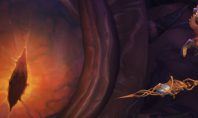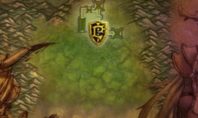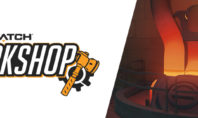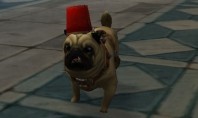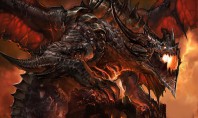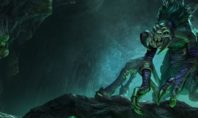Classic Server: Die Entwickler über die erhältlichen Gegenstände
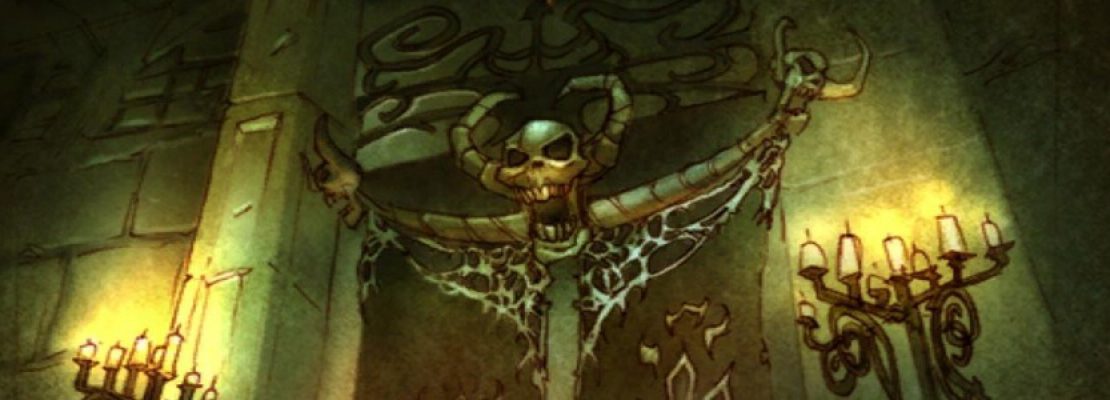
Der für die Kommunikation zwischen den Entwicklern und der Spielerschaft mitverantwortliche Community Manager Kaivax veröffentlichte heute Abend einen sehr interessanten neuen Bluepost in den Battle.Net Foren, der die wartenden Fans von Vanilia WoW darüber in Kenntnis setzen wollte, wie das Entwicklerteam eigentlich die Itemization in Classic handhaben werden. Wie bereits in einem anderen Bluepost zu diesem Thema erwähnt wurde, ist die Freischaltung der mit Content Updates zu Classic hinzugefügten Inhalte in insgesamt sechs verschiedene Phasen aufgeteilt, die jeweils neue Dungeons, Schlachtzüge, Schlachtfelder, Mechaniken und Gegenstände mit sich bringen werden. Diese Vorgehensweise bedeutet, dass im Laufe der Zeit zu Instanzen hinzugefügte zusätzliche Beute den Spielern erst dann zur Verfügung stehen wird, wenn die klassischen Server die Phase mit dem zu dieser Beute gehörenden Content erreicht haben. Zusammen mit Ahn’Qiraj veröffentlichte Gegenstände für ältere Dungeons werden also erst dann im Spiel vorhanden sein, wenn Ahn’Qiraj in Phase 5 freigeschaltet wurde.
Was die im Laufe der Zeit durchgeführten Veränderungen bestimmter problematischer Ausrüstungsteile betrifft, so möchten die Entwickler laut dem Bluepost von Community Manager Kaivax nur die Version dieser Ausrüstungsteile in die klassischen Server einbauen, die dem Stand von Patch 1.12 entspricht. Die Entwickler werden bestimmte Ausrüstungsteile also nicht an die verschiedenen Phasen ihres Plans für die Freischaltung von Inhalten anpassen. Beispielsweise startete die für Krieger bestimmte T-2 Kopfbedeckung Helm des Zorns mit Willenskraft und Beweglichkeit. In Patch 1.5.0, Patch 1.7.0, Patch 1.8.0 und Patch 1.9.0 wurde dieser Helm dann sowohl mechanisch als auch optisch immer weiter überarbeitet und unterschied sich in jeder neuen Version immer sehr stark von seinem direkten Vorgänger.
Was den Grund dafür betrifft, warum die Entwickler zwar Gegenstände für spätere Phasen aufheben, aber keine regelmäßig durchgeführten Veränderungen an Ausrüstungsteilen übernehmen, so hängt das Ganze mit den Zielen des damaligen Entwicklerteams und der aktuellen Entwickler zusammen. Später zu Dungeons hinzugefügte Beute war in den meisten Fällen als Aufholmechanik für neue Raids wie beispielsweise den Pechschwingenhort oder auch Ahn’Qiraj gedacht. Da diese Beute diese Rolle auch auf den klassischen Servern erfüllen kann, möchten die Entwickler sich dabei dann gerne an die Vorlage halten. Im Gegensatz dazu waren die dauerhaften Veränderungen bestimmter Gegenstände immer eine direkte Reaktion darauf, wie die Spieler mit den Items umgegangen sind und welche Werte sich im Verlauf der Zeit als bedeutsam für die einzelnen Klassen herausstellten. Die Spieler werden ihre damals durchlaufene Lernphase aber nicht erneut wiederholen und auch nicht plötzlich vergessen, welche Werte sie mit ihrer Ausrüstung anstreben sollten. Deshalb möchten die Entwickler einfach nur die Version von Gegenständen verwenden, die in Patch 1.12 vorhanden war und häufig am besten funktioniert hat.
Die auf die klassischen Server wartenden Spieler sollten also davon ausgehen, dass der Content zwar phasenweise freigeschaltet wird, aber Systeme wie beispielsweise das Klassendesign, die Mechaniken der Schlachtfelder oder die Werte der Gegenstände alle der finalen Version von Patch 1.12 entsprechen werden. Dadurch müssen die Spieler sich nicht andauernd fragen, welche Gegenstände mit der nächsten Phase überarbeitet werden und die Entwickler müssen nicht wie verrückt den verschiedenen Versionen einzelner Ausrüstungsteile nachjagen.
Itemization in WoW Classic
It’s been a lot of fun over the last couple of months to dive into the development of WoW Classic with the team, while trying to answer some of the many questions that have been posed here and elsewhere. Looking at the plans for a phased content release, unlocking dungeons and raids, and unlocking other systems, it’s clear that the aim is to create a progression experience that resembles the original arc from when WoW first launched. In thinking about what belongs in each of those phases, the team’s focus has always been on rewards.
Developers have scoured through vendor lists and treasure tables for items that were added in patches, and then attached them to the staged content unlock plan. This means that if a new item was originally added to a dungeon boss’s loot table with Ahn’Qiraj, you shouldn’t expect it to appear in WoW Classic until Phase 5, which is the phase that contains Ahn’Qiraj content.
Along the way, we’ve seen many questions asking if we’re also retracing the steps of incremental changes to individual items and their stats that may have occurred throughout original WoW. Such a plan could be called “progressive itemization.”
Here’s an example of progressive itemization. The Tier 2 warrior Helm of Wrath originally had Spirit and Agility on it, as well as critical strike chance. In Patch 1.5.0, the helm’s stat budget was changed to Stamina, Strength, and Defense, along with elemental resistances. Then in Patch 1.7.0, the amount of Defense on the helm was reduced. In Patch 1.8.0, the 5-piece set bonus that included the helm was fixed to work with Whirlwind, and in 1.9.0, it got a better look with an art update.
WoW Classic will only include that last version of the item, as it existed in our reference version: 1.12.
Of course, this raises the question “why?”. Why differentiate between adding new items along the way and making modifications to existing items?
When new items are added to loot tables, you’re generally seeing a deliberate effort to provide catch-up gear and/or to provide new goals for players who had exhausted an existing reward structure. For example, in original WoW, items were added to give players a way to quickly prepare for Ahn’Qiraj without having to spend months in Molten Core and Blackwing Lair.
The changing of existing items in patches often illustrated the original design team responding to how players played the game. Their primary goal at the time was to make rewards more relevant and exciting. Developers realizing that Spirit probably wasn’t an ideal stat for a warrior raid set helm* was an example of this sort of change.
Many class abilities and talents evolved similarly. For example, going into Patch 1.8.0, the game designers determined that Moonkin Form would be a more compelling 31-point Balance druid talent than the original selection of Hurricane.
It’s important to remember that there’s more to WoW Classic than a long series of changes. Even if each item change could be made, and even if every class change could be progressively recreated, that would still only constitute a piece of the overall landscape of original WoW. We remember how early raid progression was punctuated by unexpected roadblocks and workarounds:
- As far as we know, every one of the first Ragnaros kills was only possible due to a bug that made Lava Burst temporarily stop firing after a wipe.
- Chromaggus was practically unbeatable due to Ignite Flesh unavoidably and lethally stacking on tanks, until it was discovered that Flamegor’s ramp in the laboratory allowed the entire raid to damage Chromaggus without being exposed to his breath attacks.
- C’Thun was infamously seen as unkillable until a hotfix in April 2006 prevented additional tentacles from spawning while he was vulnerable.
Recreating, and then re-fixing every major progression-affecting bug wouldn’t account for what we think matters much more: the people playing the game. There were many unknowns in original WoW. The first guilds to reach Nefarian spent their initial pulls testing different ideas they had and trying to figure out what condition would get them past the first part of the fight (defeating 40 drakonids). That experience can’t be recreated, because the knowledge can’t be unlearned. For a long time after Patch 1.4.0 came out, many players simply had no idea how good Obsidian Edged Blade or Aged Core Leather Gloves were. The power of weapon skill will be no surprise in WoW Classic.
So rather than try to recreate a specific experience from 2005 that can never fully be recaptured, our aim has been to accurately and fully restore the original game’s mechanics and stats to their final and most polished state from before The Burning Crusade. That mission has been a pillar of WoW Classic’s design from its inception.
This means that while content will be unlocked progressively to allow for each raid tier to shine, systems such as class design, battleground mechanics, and stats on existing items will all be set to their final 1.12 conditions. That should take the pressure off players to be constantly figuring out what we might do next to remain exactly in line with how the game once played out, and we can all focus a little more on community building and enjoying the experience together.

